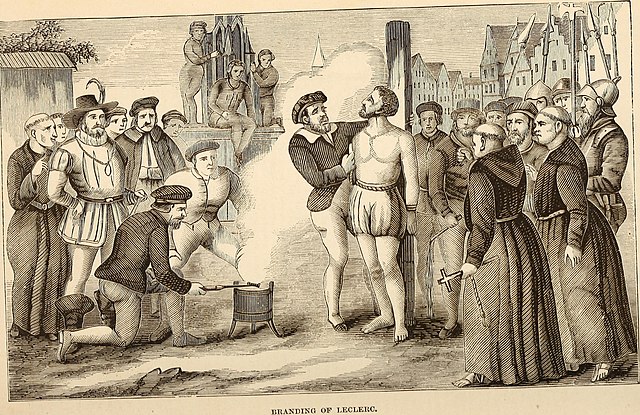Horse theft is the crime of stealing horses. A person engaged in stealing horses is known as a horse thief. Historically, punishments were often severe for horse theft, with several cultures pronouncing the sentence of death upon actual or presumed thieves. Several societies were formed in the United States to prevent horse theft and apprehend horse thieves. However, horse theft continues to occur throughout the world, as horses are stolen for their meat, for ransom, or in disputes between their owners and other persons. Horse theft today is comparable to automobile theft, a crime punishable by felony jail time.
1913 photo of tree in Horse Thief Canyon where a number of horse thieves were hanged
Alfred Jacob Miller's Snake Indian Pursuing "Crow" Horse Thief, c. 1859
1877 chromolithograph, The trial of a horse thief
Bentonville Anti-horse Thief Society historical marker in Ohio
Human branding or stigmatizing is the process by which a mark, usually a symbol or ornamental pattern, is burned into the skin of a living person, with the intention that the resulting scar makes it permanent. This is performed using a hot or very cold branding iron. It therefore uses the physical techniques of livestock branding on a human, either with consent as a form of body modification; or under coercion, as a punishment or to identify an enslaved, oppressed, or otherwise controlled person. It may also be practiced as a "rite of passage", e.g. within a tribe, or to signify membership of or acceptance into an organization.
Modern strike branding
Branding of a naked enslaved woman in Africa
Branding of the Huguenot John Leclerc during the 16th century persecutions.
Whipping and branding of thieves in Denmark, 1728








